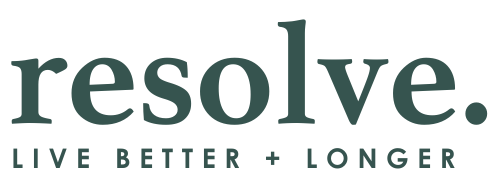Waking Up at 3 A.M.? It Might Be Your Breathing, Not Your Brain
If you’re waking up startled in the early morning hours with your heart pounding, don’t blame stress just yet. In many cases, disrupted breathing — not anxiety — is the real reason behind poor sleep.
When you sleep on your back and breathe through your mouth, your tongue naturally falls backward, partially blocking your airway. This subtle airway collapse triggers a spike in adrenaline, pulling you out of deep sleep and jolting you awake.
Mouth taping for sleep offers a simple solution: by encouraging nasal breathing, your tongue stays properly positioned against the roof of your mouth, maintaining a clear airway. Your nervous system stays calm — and you stay asleep longer and more deeply.
The Brain Benefits of Mouth Taping (Beyond Better Sleep)
Mouth taping isn’t just about snoring or dry mouth — it’s about optimizing your brain’s ability to heal, recharge, and protect itself at night. Here’s how mouth taping benefits brain health:
1. Improves Oxygenation and Brain Energy
Nasal breathing during sleep increases oxygen saturation, delivering vital fuel to the brain. Better oxygenation means clearer thinking, sharper focus, and improved energy during the day.
2. Increases Nitric Oxide Production
The nasal passages produce nitric oxide, a molecule that boosts blood flow and oxygen delivery. Higher nitric oxide levels are associated with enhanced cognitive function, memory, and even protection against neurodegenerative diseases.
3. Activates the Glymphatic System
The glymphatic system acts like the brain’s nighttime janitor, flushing out waste products like amyloid-beta (associated with Alzheimer’s disease). Mouth taping for brain health promotes nasal breathing, helping this system work more efficiently and protect cognitive function long term.
4. Regulates Cortisol and Lowers Stress
Chronic mouth breathing during sleep can disrupt cortisol rhythms, contributing to brain fog, fatigue, and mood swings. Nasal breathing supports parasympathetic (rest-and-digest) activation, helping to stabilize cortisol and improve emotional resilience.
5. Promotes Deep Sleep Cycles
Nasal breathing supports entry into slow-wave and REM sleep — the two stages critical for memory consolidation, learning, creativity, and emotional processing. Better sleep cycles mean a better brain the next day.
How to Start Mouth Taping: Easy, Affordable Options
You don’t need fancy products to experience the benefits of mouth taping for sleep. In fact, one of the cheapest and most effective methods is using flexible kinesiology (KT) tape.
How to start mouth taping with KT tape:
- Cut a small, flexible strip (about 1–2 inches).
- Place it vertically across the center of your lips.
- Start with light pressure so you can still open your mouth if needed.
- As you get comfortable, you can gradually apply it more snugly.
Other inexpensive mouth tape options:
- Micropore medical tape: breathable, gentle, and easy to remove.
- SomniFix Strips: a specialty option designed for beginners (slightly more expensive).
Tip: Always patch-test the tape on your skin during the day first to make sure you don’t react to the adhesive.
Tips to Make Mouth Taping More Comfortable
Mouth taping can feel a little strange at first—but like any new habit, consistency is key. These tips can help smooth the transition:
1. Practice During the Day
Start by wearing the tape for short periods while doing calm activities—reading, journaling, or scrolling through cat videos (no judgment). This helps your nervous system associate the tape with safety and calm, not restriction.
2. Don’t Over-Tighten at First
Begin with a small, vertical strip placed in the center of your lips. This leaves room for airflow if needed and gives you a gentle introduction. As you adjust, you can try wider strips or full-coverage options made specifically for sleep.
3. Clear Your Nose Before Bed
Clear nasal passages make all the difference. Use a saline spray, neti pot, or warm shower to decongest before bed. If you’re chronically stuffy, address underlying causes—like allergies, mold exposure, or a deviated septum—before committing to nightly taping.
4. Stay Consistent
Your brain and body adapt quickly. Most people find that within 3 to 7 nights, they’re sleeping more deeply, snoring less, and waking up clearer-headed. If it feels odd at first, that’s normal—don’t mistake discomfort for danger.
Who Should Avoid Mouth Taping?
While mouth taping benefits many people, it’s not for everyone. You should avoid mouth taping if you:
- Have chronic nasal congestion or sinus infections
- Have untreated sleep apnea
- Experience severe anxiety or claustrophobia
- Struggle to breathe easily through your nose when awake
When in doubt, talk with your healthcare provider before starting.
Final Thoughts: Small Tape, Big Brain Benefits
At first glance, mouth taping might sound (and look!) strange — but the science is compelling.
By simply encouraging nasal breathing during sleep, you can optimize oxygen delivery, support brain detoxification, balance stress hormones, and dramatically improve focus, memory, and mood.
And best of all? You can get started with a simple roll of KT tape or paper tape — no expensive gadgets required.
Research + Resources
Nasal respiration entrains human limbic oscillations and modulates cognitive function
High nitric oxide production in human paranasal sinuses
Brain’s waste-clearance pathways revealed for the first time
Investigation on the effect of oral breathing on cognitive activity
Affiliate Disclaimer:
Some of the links in this post are affiliate links, including Amazon affiliate links. This means that if you click through and make a purchase, our clinic may earn a small commission at no additional cost to you. We only recommend products we genuinely use and trust in our clinical practice. Thank you for supporting this work.



